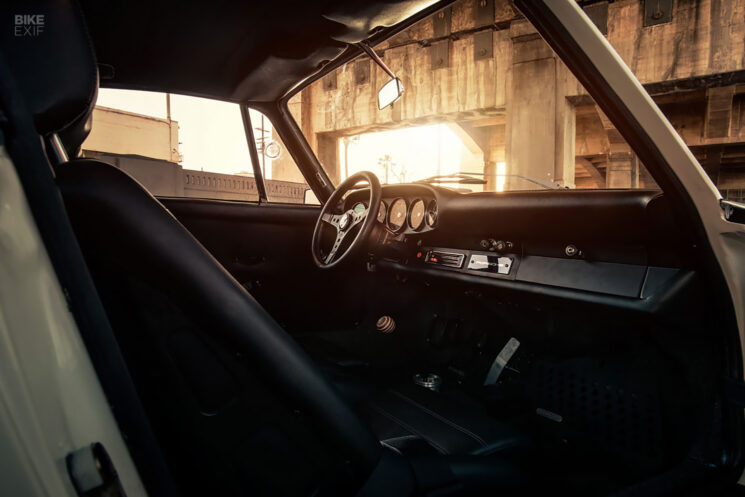In downtown Los Angeles, just blocks from where photographer Sean Klingelhoefer is standing, resides the Walt Disney Concert Hall. Renowned architect Frank Gehry designed the megalith of curvaceous and angular raw steel to create an expanse described as “near acoustic perfection”.
Down the street it stands, permanent and complacent, a viewing curiosity for passersby, waiting to be filled with sound. Today’s subject for Klingelhoefer, however, is a moving one – one he had doubts of ever seeing finished. Tearing through lower Grand Avenue, it is alive, exuding acoustic bliss to its sidewalk audience; an equally visual experience for those spry enough to catch a glimpse. It is Magnus Walker’s 1972 Porsche 911 ‘STR,’ a masterpiece of sound and design.

By 1972, Porsche had long cemented a place for themselves within the automotive world, largely due to the success of the first Porsche 356 (built in the late ’40s), and in the ‘50s with their race-proven 550 Spyder. But the model that truly defined Porsche as a motorsports icon, both then and today, was the 911. Built in 1964, it was to be the successor to the 356. Carrying over its distinctive, curvaceous lines and air-cooled rear engine design in a more stout and sturdy chassis, the 911 would leave a trail of trophies and accolades in its path for the next five decades.
History lessons aside, it’s undeniable that the specimen before us is a 1972 Porsche 911 by design. But within the subtleties lie the clues to this being something of an anomaly from the standard production model. There are the molded front turn signals from the 911R (a prototype 1967 Porsche limited to a production of just 20), a race-inspired center hood gas filler, retrofitted and drilled early model 911 door handles, and custom stretched and rolled front fender flares inspired by the rally-built 911ST from the early ‘70s.
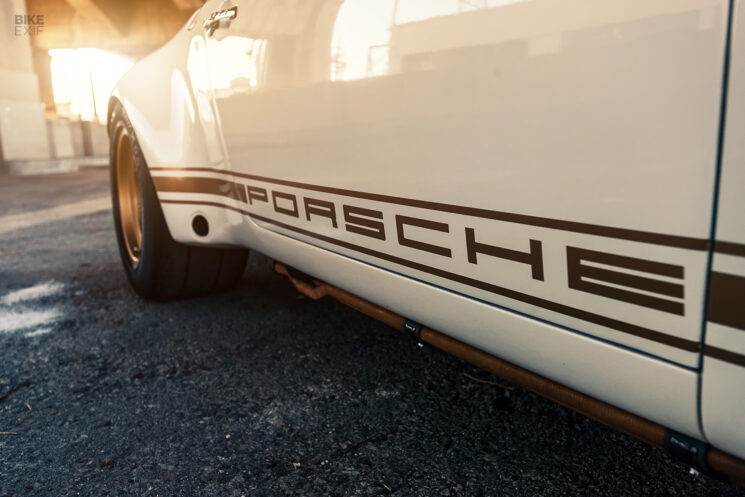
The rear fenders are a nod to the ST as well, with 911 Turbo arches carefully grafted to the existing body panels. Wrapping around to the molded rear 911R taillights and signals is a louvered rear deck lid, emblazoned in gold with ‘911 STR’, a moniker derived from the elements which inspired this creation.
Klingelhoefer has a particular affinity for seeing this car in its current state.
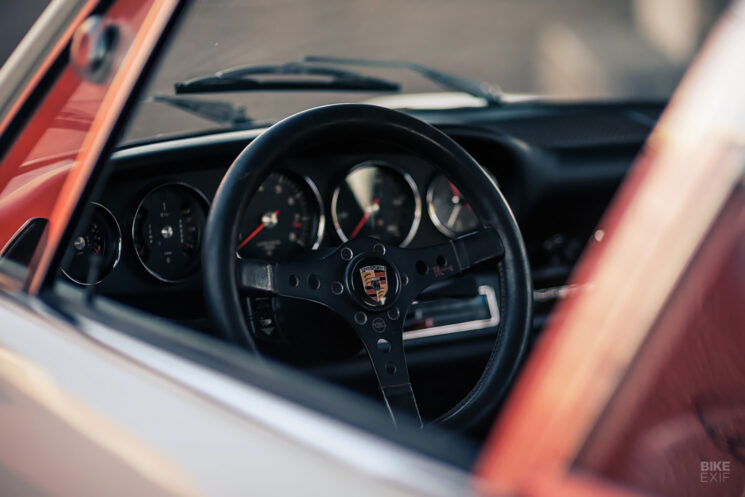
“When I first visited Magnus back in November, the car was still a work in progress,” says Sean. “I mostly kept to myself and made mental notes about the way these cars are built. I made a promise that day to return to shoot this incredible car once it was all buttoned up. It seemed for a while like that day might never arrive.”
Six months later, the day’s arrival is realized by the sound of the 911 STR permeating through downtown Los Angeles.

The car’s builder has earned a bit of Internet notoriety thanks to the half-hour short film Urban Outlaw, and is often highlighted for his uncharacteristic look as a Porsche builder/owner. As it’s been said, though, “Know the car, know the man.” Spend any amount of time discovering the details and nuances of this 911, and you will learn everything you need to know about Magnus Walker. Today isn’t about him. Today is about his magnum opus.
The original platform for the base model 911T Porsche was factory equipped with a 2.4L flat-six boxer engine. This has been swapped for a Rennwerks custom-built 3.2-liter short-stroke flat-six, increasing the power being delivered to the reinforced Porsche 915 transmission. The upgraded suspension and chassis come in the form of Tarrett front and rear sway bars, quick-change torsion bars, anti-bump steer kit, semi-solid engine and transmission mounts, and Bilstein sport shocks.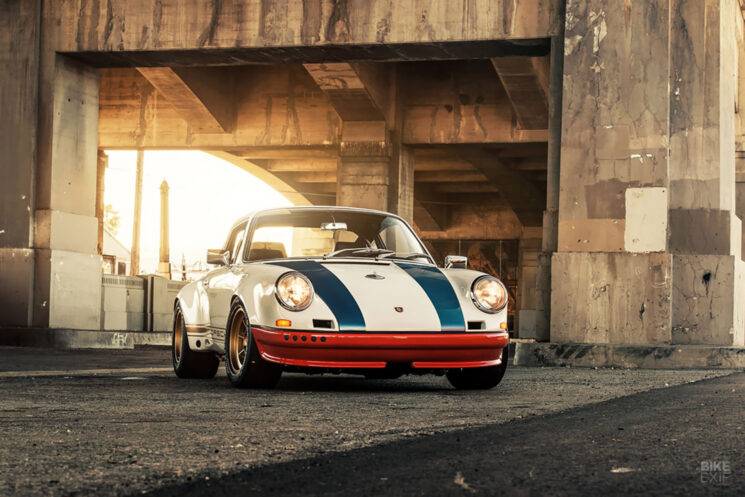
If there is a hot rod restomod category for Porsches, this defines it. The car has been streamlined for speed and stability, and a larger displacement power plant readily backs up what the exterior seems to be running its mouth about. There was no bloodletting for the mere sake of speed; every change was carried out with surgical precision. The final product is a beautifully inspired symphony of components from various corners of the maker’s mind – the epitome of performance art in the form of an automobile.
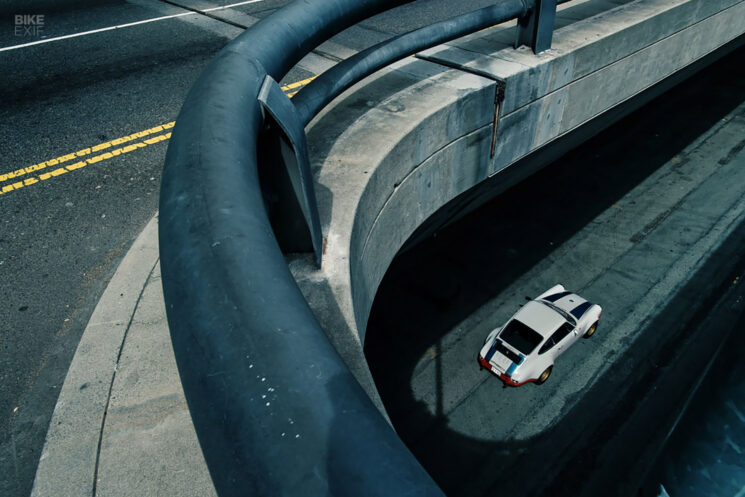
This article first appeared in issue 15 of Iron & Air Magazine, and is reproduced here under license.
Magnus Walker | Instagram | Words by Adam Fitzgerald | Images by Sean Klingelhoefer
